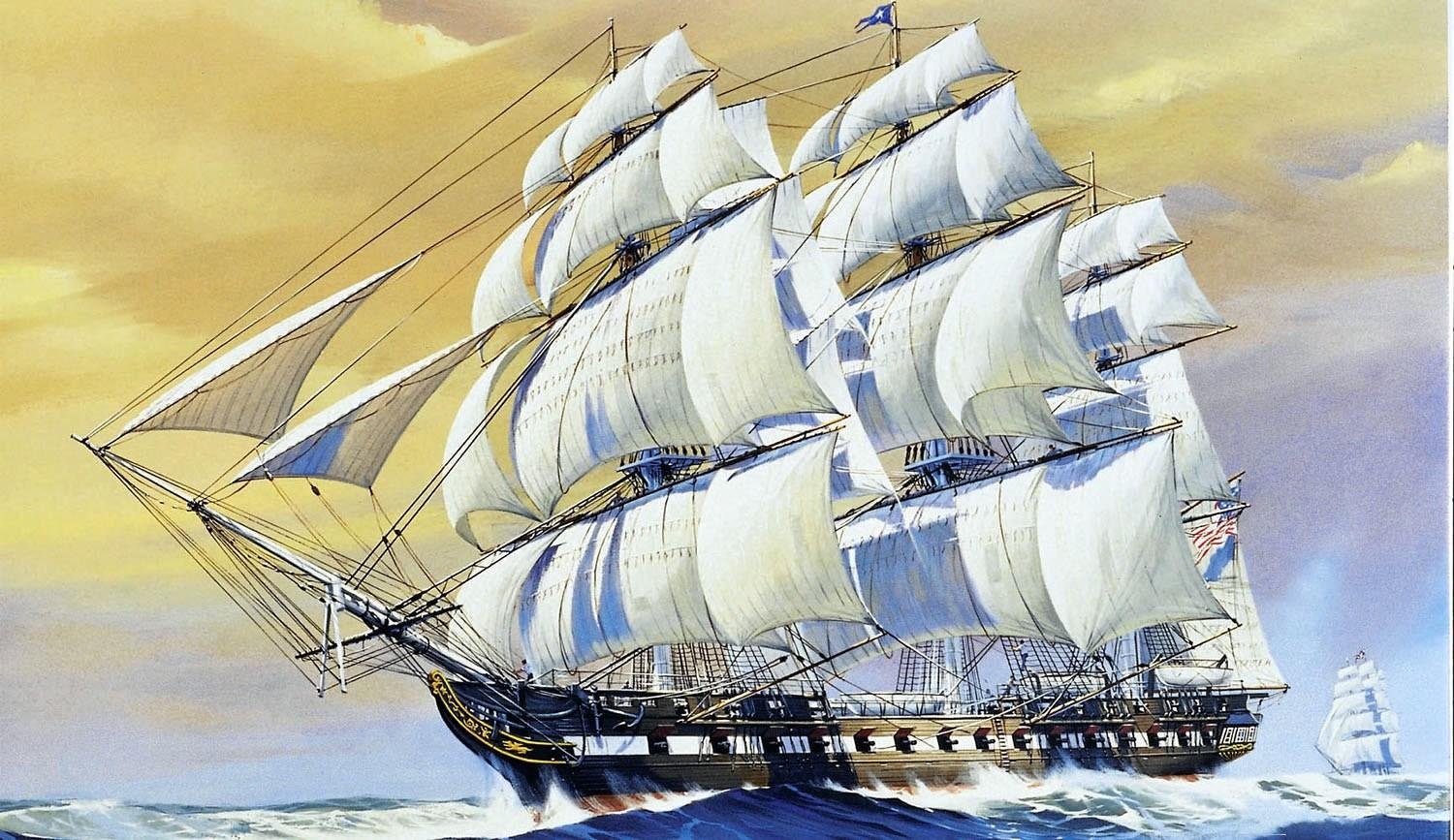-
Posts
1,070 -
Joined
-
Last visited
Content Type
Profiles
Forums
Gallery
Events
Everything posted by GGibson
-
Interesting to hear that they are editing your posts/pictures over on SoS. I didn't think comparison of products or being critical of products was allowed on SoS! A post of mine back in May 2013 was edited by SoS admins because I made a contrast, ironically, between Syren deadeyes and another company, which I mentioned by name... apparently a no-no. Keep doing what you are doing, Chuck! Being successful! 🏆 I'll be ordering a bunch of these new blocks and deadeyes in due time... Thanks, Chuck!
-
In preparation of someday soon beginning my Constitution build, I have begun saving/bookmarking/favoriting (whatever you call it) a whole bunch of Constitution build logs here on MSW and even some on another similar forum website. I don't, though, recall any of those build logs having Constitutions with natural finishes. They seem to all have been painted and coppered? Peter, do you know of some existing build logs here on MSW that have not been painted? Would be interested in looking at them and comparing.
-
I have seen Arnot's "USS Constitution 1812-1815: Step-by-Step Instructions..." book advertised on Amazon in both "Used-Very Good" and "Collectible-Good" conditions. Watching your build with great interest, kmart. No idea yet which era I will shoot for once I get to working on this ship. But appreciate all the info from all sides!
-
Looks very good, Dan! Great work so far. I recall doing a ton of sanding at different grits all over the hull, but especially around the stern. And, yes, I loved using the binder clips, as well! Carry on! 👍
- 37 replies
-
- Model Shipways
- muscongus bay lobster smack
-
(and 1 more)
Tagged with:
-

Need belaying plan for Model Shipways Syren
GGibson replied to terry2889's topic in Masting, rigging and sails
Nice looking Syren, terry! Great work, bad puppy! Looks like the 20 chapters of instructions can be downloaded from ME's Syren page, and the plans can be purchased for $70. Model Expo has always been great about replacing damaged parts at no charge if you purchased the kit from them. Maybe they can look at the shredded plans in the same light. In the meantime, if the puppy has a key to your shipyard room, you'd be advised to change the locks! Good luck! -
Looks great, Peter! If I am following your query correctly, will the window frames themselves be painted black? So, you are referring to the "window glass" portion of the window construction? I'd vote for white, then. Good contrast, and with the clear film coverage you place on top of that, it will look nicest, IMO. Awesome work, sir! Carry on! 👍
-
Well, guess that answers the age-old questions "How many blocks can dance on the face of a penny?".... Oh, wait, that was angels on the head of a pin... Never mind! Looking great, Chuck! I had some 3/32" blocks needed for my Bluenose, which translates to 2.32mm, so close! And those things were itty-bitty. Yeah, I lost a few on the floor! Will definitely take inventory of what I need for the ships in boxes waiting up on the shelf. These look awesome, sir! 🏆🏆
-
Working on my Bluenose ratlines now. Using a clove hitch knot at a 1:64 scale using 0.009" rope. You get into a pretty steady groove with a set of tweezers in hand to assist in grabbing.
-
Looks really good, Jon! Great attention to detail. I need some education, though... what was the actual purpose of the black tubes attached to the posts? Were they just a "protection buffer" for the posts as things were being moved around on the deck? Or was there another purpose? I like your RP Toolz punch & die set! Have you used that a lot? I saw it and thought "Oooh, I need that, too!!" 🤣 Great work, sir!
-
Hi Dan! Just peeking in on the beginning of your Lobster Smack. Great start so far! This was a fun, educational build for me. You should enjoy it! And, as you have already discovered, you can never have enough spring clamps or rubber bands! I think everyone had a challenge in connecting the two sides of the deck to where it looked proper, so you did fine with it. Will continue to follow your progress! Carry on! 👍
- 37 replies
-
- Model Shipways
- muscongus bay lobster smack
-
(and 1 more)
Tagged with:
-
That's a ton of belay pins, John! Appreciate the fact that you decided to go back and improve on something after-the-fact. OCD perfection! 👍🏆
- 165 replies
-
- Red Jacket
- Marine Model Company
-
(and 2 more)
Tagged with:
-
Great work, Jon, in using the Dremel to achieve your goals. The ladders look really nice from my perspective. I was also impressed with Mustafa's method in using his Proxxon mill machine and I'm excited to have added that mill machine to my shipyard tools, as well. I have used it several times already with my Bluenose and am sure it will get a workout once I get to my Constitution. Anxious to see your remaining work on your gun deck! Carry on! 👍
-
If you are referring to the product in the original post, that appears to be the OcCre cabinet which can be found on MicroMark's website. OcCre® Workshop Cabinet – Micro-Mark (micromark.com) While it looks nice and tidy, if you plan on spending any length of time in this hobby, I would think you would outgrow this cabinet pretty quickly with more.... STUFF! I know I have! 👍🤣
-
This latest one started at $1,200. And yes, like the first one that ended up at $4,250, you won't see hardly any action on it until just hours before it closes. I was watching the bidding on that first one and, within a couple hours of the closing, bids were still at a "reasonable" $1,500. Then two or three bidders got into a bidding tussle and.... boom. <shrug>
About us
Modelshipworld - Advancing Ship Modeling through Research
SSL Secured
Your security is important for us so this Website is SSL-Secured
NRG Mailing Address
Nautical Research Guild
237 South Lincoln Street
Westmont IL, 60559-1917
Model Ship World ® and the MSW logo are Registered Trademarks, and belong to the Nautical Research Guild (United States Patent and Trademark Office: No. 6,929,264 & No. 6,929,274, registered Dec. 20, 2022)
Helpful Links
About the NRG
If you enjoy building ship models that are historically accurate as well as beautiful, then The Nautical Research Guild (NRG) is just right for you.
The Guild is a non-profit educational organization whose mission is to “Advance Ship Modeling Through Research”. We provide support to our members in their efforts to raise the quality of their model ships.
The Nautical Research Guild has published our world-renowned quarterly magazine, The Nautical Research Journal, since 1955. The pages of the Journal are full of articles by accomplished ship modelers who show you how they create those exquisite details on their models, and by maritime historians who show you the correct details to build. The Journal is available in both print and digital editions. Go to the NRG web site (www.thenrg.org) to download a complimentary digital copy of the Journal. The NRG also publishes plan sets, books and compilations of back issues of the Journal and the former Ships in Scale and Model Ship Builder magazines.





